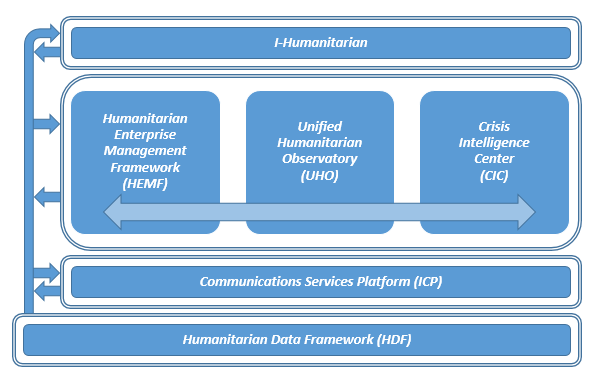Story of the project
Background
During the last decade as we started witnessing the rising momentum of data science backed with advanced technologies such as IOT, Cloud Computing, 4/5G, Drones and Artificial Intelligence driving the ongoing forth industrial revolution which is already reshaping our entire human civilization through drastically boosting our productive activities in terms of quality, agility, flexibility and scale; A whole new set of unprecedented and unconventional challenges popped-up on different levels starting with the most urgent, crucial and complex among them all … How to design, implement and manage such transformation to ensure a smooth transition from the efficiency-retrograding rigid traditional organizational model into a rapidly effective, highly dynamic data-driven one fully capable of harnessing the power of modern technologies to continually boost its performance ?
Despite the global movement in a wide spectrum of organizations across various industries and technical (e.g. Health, Automotive, Government, Construction, Media, Defense …etc.) fields which already had made a remarkable progress within this area, yet the situation for the humanitarian system still severely noticeably lagging behind in that track due to the unique challenges due to the nature of their structures and activities which can be all traced back to single origin: the humanitarian data life cycle ... all of the on it's turn leading to the most vital question: how to build up a smart & highly automated humanitarian system? The answer is Humarek
What is Humarek
A first of it’s kind comprehensive informatics ecosystem specifically designed to solve key challenges of humanitarian data from collection and governance up to advanced real-time processing and intelligence empowering the international humanitarian system for successfully managing a complex, mission-critical digital transformation towards a new smart and highly automated organizational model using a unique suite of integrated data platforms including standards, methodologies, processes and technologies
Architecture
Humarek framework is composed of 6 fully integrated platforms tightly coupled through smooth and continous data circulation ensuring the sustainability of a healthy informatics environment in terms of data quality, availability, consistancy, resilience and reliability as following:

>> Integrated Communication Platform (ICP)
From inter-organizational data collection and exchange during a crisis to research information dissemination either for research or public knowledge purposes ; having a highly effective coordination & collaboration structure comes as mission-critical requirement for the humanitarian sector which necessitates the establishment of high accuracy & precision communications system between all involved parties.
Designed specifically for that role, ICP comes as a highly communications’ framework built upon a solid foundation of scientific and technical standards with a highly dynamic multi-modular Anatomy including:
- Emergency Communications Architecture (ECA): providing a well-defined coordination ecosystem including processes, methodologies, programs design and implementation and tools providing a solid ground for a highly effective inter-organizational collaboration specially in the area of humanitarian field action.
- Humanitarian Technical Dictionary (HTD): containing over 50,000 definitions for scientific and technical terms related to humanitarian field
- Engine for Linguistic Intelligence (ELI): e-platform hub powered by artificial intelligence utilizing HTD as knowledge base providing a powerful set of NLP applications including bulk document and real-time translation
>> Humanitarian Data Framework (HDF)
Data Ecosystem Architecture serving design, development and management of standardized formats, structures, models, processes, methodologies and tools coupled with unified humanitarian dictionary; serving together as a foundation towards establishing an effective data collection and exchange, which represents a central building pillar for successful humanitarian digital transformation through radical enhancement in data management, governance and processing and paving the way for high-precision reliable data analytics and big data applications (e.g. predictive analysis), which results in 50-85% reduction of time & manpower resources normally utilized in humanitarian operations (such as Nexus programming model, HNO 2 weeks cycle supporting IASC decision making activities at the beginning of an outbreak)
>> Crisis Intelligence Center (CIC)
situational awareness platform supporting ad-hoc deployment (can be deployed easy and very fast within less than 24 hours) providing humanitarian professionals with a live-stream of field data during an outbreak of a humanitarian crisis while radically reducing the risks and logistical complications related to urgent large-scale deployment of humanitarian professionals and analysts; this project key objective is to build up an easy to use comprehensive, robust and precise data collection platform using a combination of drones, satellites, IOT, field deployed robotics and automated data crawling (Web, TV, Radio) as data sources reinforced with data mining and artificial intelligence to provide vastly enhanced capacities of crisis situational awareness and analysis.
>> Unified Humanitarian Observatory (UHO)
SAAS model cloud based data services (exchange, collection, governance, management, processing, analytics, statistical modeling, big data and artificial intelligence) backed with a large-scale verified humanitarian data banks to serve critical areas in humanitarian analysis and research (e.g. using big data to detect complicated data patterns helping humanitarian analysts to design more effective crisis preparedness and contingency plans on both national and regional levels).
>> Humanitarian Enterprise Management Suite (HEMS)
comprehensive organizational management framework designed specifically to best fit NGO’s operations process architecture achieving best utilization of human, financial, physical and information resources through an integrated set of digital solutions covering various business aspects including (but not limited to) Supply Chain and Logistics, financial management and governance, administrative operations and compliance.
>> I-Humanitarian
Humanitarian search engine serving availability of verified data covering wide spectrum of humanitarian knowledge material including field data, tools, professionals, scientific research papers, NGOs, academia.
